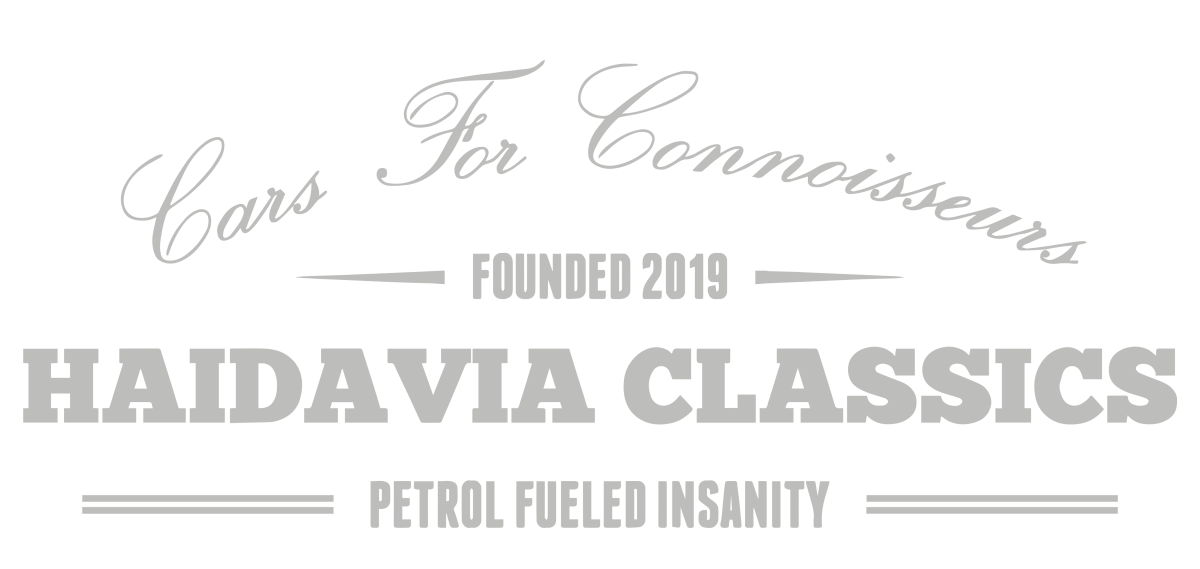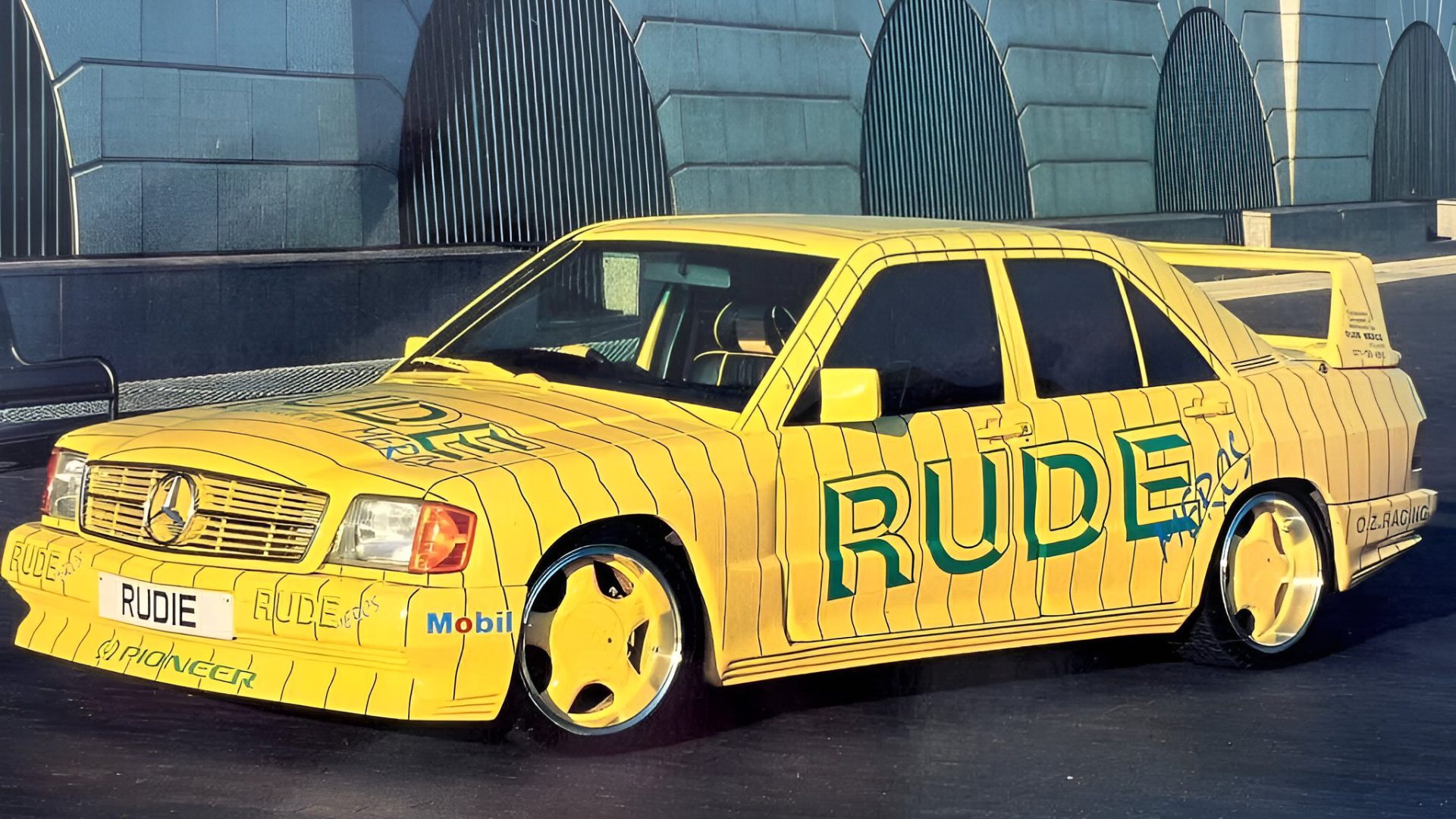In the late 1980s, Zender, the renowned German tuning company, introduced a captivating show car based on the W201 190E model. This luxurious creation showcased Zender’s expertise in automotive styling, featuring their brand-new wide-body W201 body kit.
Zender meticulously applied their full body kit to the car, including redesigned bumpers, side skirts, and modifications to the side panels to accommodate large wheel arch extensions, reminiscent of the iconic Audi Quattro. The result was a significantly more aggressive appearance, though not as extreme as the creations from Koenig-Specials. To enhance the car’s aerodynamics, a large three-piece spoiler was added to the rear, which was perfectly complemented by a set of 16″ Zender Turbo alloys. In addition to the exquisite body kit, the car sported a Zender-specific shade of metallic gold paint, a vibrant color that surpassed any Mercedes hue of the era, further accentuating the car’s allure.
Zender didn’t stop at revolutionizing the car’s exterior; they also transformed the interior. The warm-hued theme continued inside, with a delightful combination of caramel and brown leather upholstery. The front seats were Recaro CSEs with full electrical operation, while the rear featured individual Zender bucket seats. Passengers in the back were treated to a console equipped with a Blaupunkt Heidelberg radio, cassette holders, and two pairs of Sennheiser headphones for a comfortable and serene journey. Meanwhile, front-seat passengers could enjoy the entertainment provided by a Blaupunkt Bamberg stereo. Every seat, including the rear ones, featured a heating function, and an abundance of leather-covered surfaces adorned the car’s interior. From the dashboard and center console to the door trims and headlining, caramel leather added a touch of opulence. Even the pillars and sun visors received the lavish leather treatment.
Recreating this masterpiece using Zender’s catalog at the time would have cost around 100,000 DM, while a standard Mercedes-Benz 500SEL V126 was priced at approximately 75,000 DM. For instance, the body kit, including wheels and tires, came in at 20,000 DM. The exquisite Recaro CSE seats commanded a price of 1,500 DM each, and the Zender bucket seats in the rear cost 4,350 DM. Additional body kit items, such as a SEC-style bonnet, were available for 3,500 DM. Meanwhile, a regular 190E 2.0 had a price tag of 29,000 DM during that period.
Unbeknownst to Zender, their wide-body kits caught the attention of Jon Bolton, the founder of Rude Mercs, a separate tuning company. Although there was no collaboration between the two companies, Rude Mercs acquired the Zender body kits and incorporated them into their own remarkable projects. Jon Bolton had been involved in the automotive industry for over two decades, and after initially engaging in conventional Mercedes sales, he ventured into the world of car conversions in the late 1980s. His first conversion involved parts of the Zender bodykit but was more tame than the Zender show car. This was followed by a W201 2.5-16 conversion featuring the complete Zender body styling, along with altered suspension and a revamped interior. This second conversion was more flamboyant than the first, captivating attention with its brilliant white appearance.
However, it was the third version that truly stood out—a creation of such audacity that Jon rightfully felt proud. His new creation, based on the W201 with the Zender wide-body kit and the addition of an Evolution II wing and perhaps a touch of the magic from the country where the legendary tuning company Cosworth originates (England), managed to produce a staggering 400 horsepower. With the addition of the Zender 500SEC style grille and bonnet, the result was an extraordinary car that Jon aptly named the “Evolution 3.” Painted in the brightest shade of Jamaican yellow with green stripes all over it, it exuded an unparalleled aura of power and dominance. The vibrant colors of the Jamaican flag—yellow, green, and gold—were intricately stitched into all four head rests and even the steering wheel. This striking masterpiece caught the attention of many and inspired the adoption of the moniker “Rude Mercs,” which was originally coined by a Jamaican customer and subsequently embraced by Jon. It also became the cover model for the book “Custom Mercedes-Benz” by David Sparrow and Adrienne Kessel.
In addition to the “Evolution 3”, Rude Mercs also offered simple styling packages that included spoilers and side sills. These packages, along with extras like color-coded wheels and sports tires, allowed customers to enhance the appearance of their Mercedes vehicles with Rude Mercs’ signature style. The company’s offerings extended beyond just body modifications; they also showcased their design prowess with a custom 190 cabriolet. This unique creation yearned for endless summers, whether it be the pleasant European climate or the sunny shores of Jamaica.
Jon Bolton, the man behind Rude Mercs, tapped into an interesting market niche. His conversions gained immense popularity among the elite in Jamaica, where Rude Mercs’ audacious creations gracefully cruised the island’s roads.
While Zender and Rude Mercs operated independently, their paths crossed through the utilization of Zender’s wide-body kits. Zender’s show car, with its refined luxury and aggressive appearance, served as the inspiration for Jon Bolton’s vision. He recognized the potential of these body kits and skillfully incorporated them into his projects, resulting in the legendary “Rude Mercs” that pushed the boundaries of automotive design and performance.
The story of Zender and Rude Mercs showcases the diverse world of automotive tuning and customization. It highlights how inspiration can be drawn from various sources, leading to the creation of unique and awe-inspiring vehicles. Both companies contributed their own distinctive touch to the automotive landscape, leaving a lasting impact on the industry.


